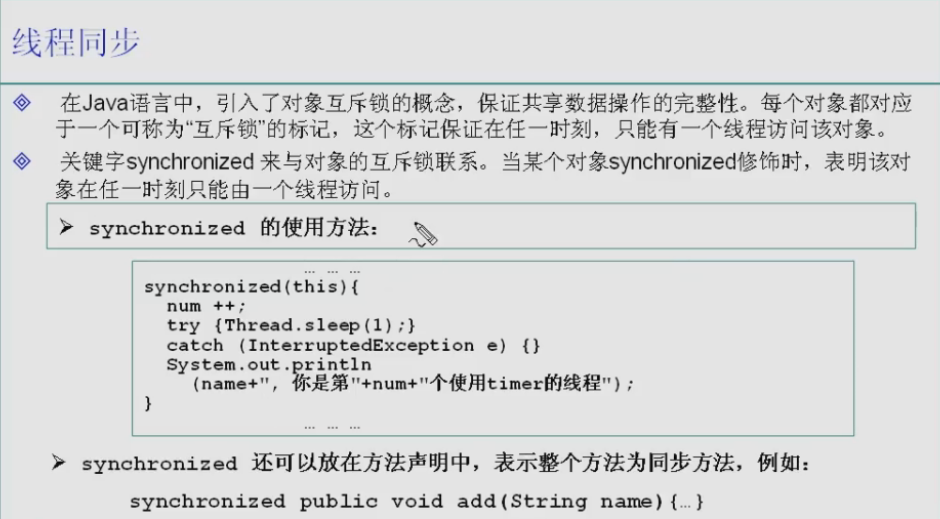
如何保证多个线程多同一个资源的共享透明化:
一个有问题的多线程的例子::
public class TestSync implements Runnable{
Timer timer = new Timer();
public static void main(String[] args) {
TestSync testSync = new TestSync();
Thread thread1 = new Thread(testSync);
Thread thread2 = new Thread(testSync);
thread1.start();
thread2.start();
}
@Override
public void run() {
timer.add(Thread.currentThread().getName());
}
}
class Timer{
private static int num = 0;
public void add(String name){
num++;
try {
Thread.sleep(1);
}catch (InterruptedException e){}
System.out.println(name + ",你是第" + num + "个执行timer的线程");
}
}
上面的例子共享Timer对象, 执行的输出结果为:
Thread-0,你是第2个执行timer的线程
Thread-1,你是第2个执行timer的线程
解决方法一:
将下面的执行方法锁住,保证原子性--
synchronized (this) {
num++;
try {
Thread.sleep(1);
} catch (InterruptedException e) {
}
System.out.println(name + ",你是第" + num + "个执行timer的线程");
}
或者
public synchronized void add(String name) {
num++;
try {
Thread.sleep(1);
} catch (InterruptedException e) {
}
System.out.println(name + ",你是第" + num + "个执行timer的线程");
}
再执行测试类,结果就对了。
执行结果:
Thread-0,你是第1个执行timer的线程
Thread-1,你是第2个执行timer的线程
Process finished with exit code 0